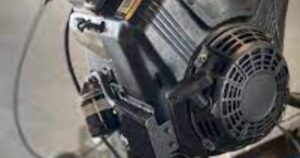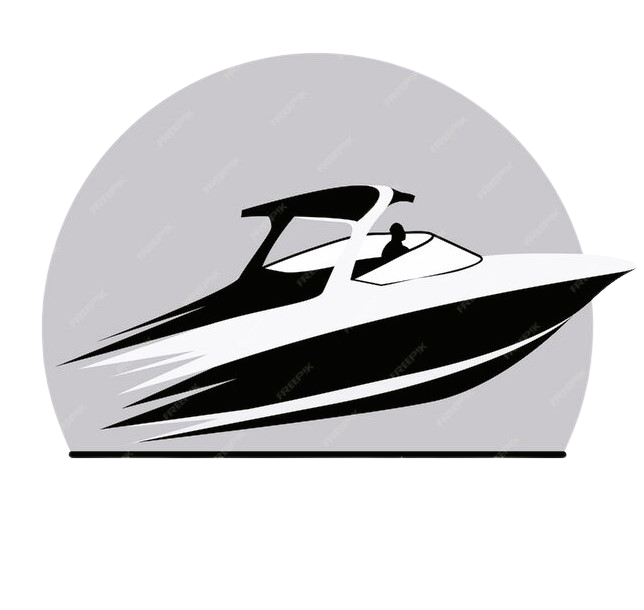A surface-drive mud motor can be a game-changer when traversing shallow waters and muddy terrain. These specialized motors are designed to provide maximum performance in challenging conditions, making them popular among outdoor enthusiasts and professionals. However, with many available options, choosing the right surface-drive mud motor can take time and effort. In this article, we’ll delve into the essential factors to consider when selecting the perfect motor for your needs.
What are Surface Drive Mud Motors?
Surface-drive mud motors are specialized propulsion systems designed for boats, particularly those used in shallow waters and muddy terrain. Unlike traditional outboard motors, which have a propeller that is submerged, surface-drive mud motors have a propeller that partially sits above the waterline. This design allows the propeller to “drive” across the water’s surface, giving these motors their name.
These motors are typically used in environments where standard outboard motors would struggle or fail to operate efficiently. They are commonly employed by fishermen, hunters, and outdoor enthusiasts who must navigate through marshes, swamps, shallow rivers, and other challenging water conditions.
Surface-drive mud motors are characterized by their ease of handling thick vegetation, mud, and obstacles. They have a long shaft that extends below the waterline, enabling the propeller to maintain propulsion even in shallow depths. Additionally, these motors often feature rugged construction to withstand the rigours of navigating rough terrain.
Overall, mud boat motor provide excellent manoeuvrability, reliability, and performance in environments where conventional propulsion systems may need to be more practical and effective. They are a vital resource for anyone who has to access remote or hard-to-reach areas by water.
Factors to Consider Before Choosing

Considering all relevant factors is paramount when making decisions, whether big or small. In the realm of selecting a surface drive mud motor for your boat, the same principle applies. Before making a choice, it’s essential to weigh various factors that can significantly impact your boating experience. These variables cover a broad spectrum of factors, such as your vessel’s power requirements, the motor’s size and weight, its durability and reliability, and its performance capabilities, such as speed, acceleration, and manoeuvrability.
Additionally, the specific terrain and water conditions you’ll be navigating through and the motor’s fuel efficiency and cost considerations should all be carefully evaluated. Furthermore, ensuring compatibility with your vessel regarding size, weight capacity, and installation requirements is crucial. By carefully considering these elements, you may decide with knowledge and select the mud motors for boats that best meets your needs, ensuring a smooth and enjoyable boating experience.
Types of Surface Drive Mud Motors
MUD motor for a boat come in various types, each designed to suit different boating needs and preferences. Knowing the many varieties helps you select the right motor for your requirements. Here are the main types of surface drive mud motors:
- Long-Tail Mud Motors: Long-tail mud motors feature an extended shaft and propeller, making them suitable for traversing deep mud and thick vegetation. These motors offer excellent manoeuvrability and can handle rough terrain with ease.
- Short-Tail Mud Motors: Short-tail mud motors are more compact and ideal for navigating through shallow waters and narrow channels. They are lightweight and easy to manoeuvre, making them popular among anglers and hunters who need to access tight spaces.
- Medium Tail Mud Motors: Medium-tail mud motors strike a balance between long- and short-tail motors, offering versatility and performance in various conditions. They are suitable for various applications, from fishing to duck hunting, and provide a good compromise between power and manoeuvrability.
Each type of surface-drive mud motor has advantages and limitations, so it’s important to carefully consider your boating needs and preferences before deciding. Knowing how these motors differ allows you to select the motor that best fits your requirements and enhances your boating experience.
Performance Considerations
Performance considerations are crucial when selecting a surface drive boat motor for your boat. These factors directly impact the motor’s efficiency, manoeuvrability, and effectiveness in various water conditions. Key performance considerations include speed, acceleration, and manoeuvrability. A motor with smooth acceleration and responsive steering can provide better control and handling, especially in tight or congested areas.
Additionally, top speed is essential for covering long distances efficiently, while good manoeuvrability ensures you can easily navigate through obstacles and tricky terrain. Fuel efficiency is another important performance factor affecting operating costs and environmental impact. Choosing a motor with optimal fuel economy without sacrificing performance can minimize expenses and reduce your carbon footprint. By carefully evaluating these performance considerations, you can select a surface drive mud motor that meets your boating needs and enhances your on-water experience.
Terrain and Water Conditions
Terrain and water conditions play a significant role in determining the suitability of a duck boat motors for your boating needs. Different motors are designed to excel in specific environments, so understanding the terrain and water conditions you’ll encounter is essential. Factors such as shallow water, muddy bottoms, thick vegetation, and obstacles can all affect the performance and effectiveness of the motor. For example, suppose you’ll navigate through shallow waters or areas with dense vegetation. In that case, you’ll need a motor with a shallow draft and a self-cleaning propeller to prevent debris buildup.
Similarly, if you’re traversing through muddy bottoms or rough terrain, you’ll require a motor with robust construction and durable components to withstand the rigours of the environment. By considering the terrain and water conditions you’ll encounter, you can select a surface-drive mud motor well-suited to handle the challenges of your boating adventures.
Compatibility with Vessels
Compatibility with vessels is an essential factor to consider when choosing a mud motor for jon boa. Ensuring the motor is compatible with your boat’s size, weight capacity, and installation requirements is crucial for optimal performance and safety.
Firstly, consider your boat’s size and weight to determine the appropriate motor size and power output. Choosing a motor that matches your vessel’s specifications ensures efficient propulsion without overloading or straining the boat.
Additionally, check the motor’s compatibility with your boat’s transom and mounting system. Some motors may require specific mounting configurations or additional hardware for installation.
Furthermore, consider your boat’s weight distribution and balance with the motor attached. An improperly matched motor can affect the boat’s stability and handling, leading to safety concerns and reduced performance.
By carefully assessing compatibility with your vessel, you can select a mud motor for boat that seamlessly integrates with your boat and enhances your boating experience with the 2019 Yamaha 250 HP F250XCA Outboard Motor.
Brands and Models Comparison

When comparing brands and models of surface drive mud motors, various factors must be considered to make an informed decision. Start by researching reputable brands known for manufacturing high-quality motors. Look for brands with a solid reputation for reliability, durability, and customer support.
Next, compare the features and specifications of different models within each brand. Consider factors such as power output, size and weight, construction materials, and additional features like self-cleaning propellers or integrated steering systems.
Reading customer reviews and testimonials can offer insightful information on the dependability and performance of various models. Pay attention to feedback regarding durability, ease of maintenance, and overall satisfaction with the motor’s performance.
Additionally, consider each brand’s availability of replacement parts and servicing options. Opting for a brand with readily available parts and accessible service centres can save you time and money in the long run.
Finally, compare prices to ensure you get the best value for your budget. While cost is an important factor, Put quality and dependability first to avoid future problems.
By carefully comparing brands and models, you can choose a surface drive motors that fulfils your requirements and offers dependable performance for many years.
Conclusion
Choosing the right surface drive mud motor for your yacht is an important decision that requires careful consideration of various factors. From assessing power requirements and motor size to evaluating performance capabilities and compatibility with your vessel, each aspect plays a vital role in determining the motor’s suitability for your boating needs.
Additionally, understanding the terrain and water conditions you’ll encounter and comparing different brands and models can further guide your decision-making process. By weighing these factors and conducting thorough research, you can select a surface drive mud motor that enhances your boating experience and allows you to navigate confidently through shallow waters, thick vegetation, and challenging terrain.
Investing in a high-quality motor from a reputable brand ensures reliability, durability, and optimal performance, providing you with years of enjoyment on the water. So, take your time, consider all the relevant factors, and choose wisely to enjoy smooth and efficient boating adventures for years to come.
FAQ:
What is the best surface drive prop?
Hands down, the Big Blade is the best mud motor performance propeller in the industry. Today, the Big Blade is even better – the newest design has a larger pitch, superior thrust in reverse and outstanding top-end speed. Most propellers lose their thrust when the end of the blades wears out.
What gear ratio for mud motor?
On some models, we put a 52-tooth on the bottom for more low-end power. 27 Kohler, 29 & 31 Vanguard—36 top and 50 bottom (1:1.389 ratio). On some models, we put a 52-tooth on the bottom or a 34-tooth on top for more low-end power. If you hit the rev limiter, go to the 40-tooth top.
How do I choose the right prop?
The traditional method of selecting a propeller considers the horsepower, boat weight, and hull type. Then, the pitch and diameter are selected, allowing the engine to run at the top end of the RPM range. This method typically provides good all-around performance once the boat is loaded with people and gear.

